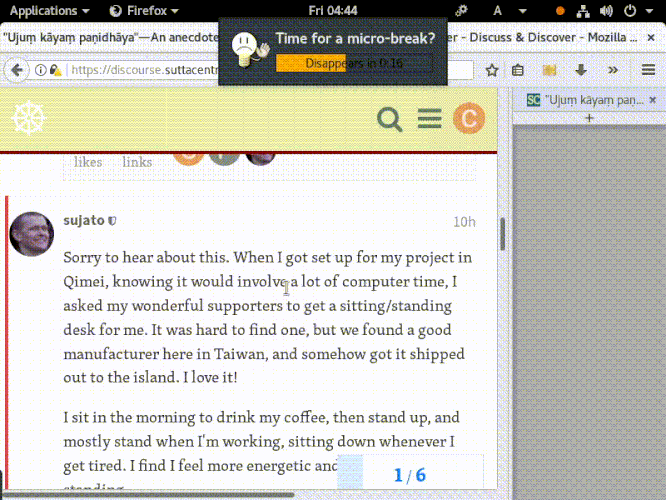In the last half-year or so, it’s slowly dawned on me that what I now call for myself ‘wavering body-mindfulness’ during desktop computer usage has precipitated an erosion of my ability to lie down comfortably, even to the point of consistent sleep interruption which I’d been measuring with digital accelerometer.
In some cursory research into the condition across the Korean and English webs, I encountered a blog article that I found to most compellingly capture my own situation. (Incidentally, I found today that the publication date is the day I got an x-ray.)
Journalist-blogger, Mr. Yoon Byoung Ki (윤병기), has written two drier articles on the topic in 2015 for the Who-Saeng-Shin-Bo (후생신보; 厚生新報), a medical news print publisher based in Seoul.source
Drawing some inspiration from a comment by @Mat I began translating it below. I also suspect that this may be an emerging problem to varying degree for other millennials at large born into this era of rectangular viewports.
Sleepless Nights: Is Il-jja-mok1 the cause?
December 12, 2016 | Yoon Byoung Ki (윤병기) | Partial Korean Translation my own
An ordinary office-worker that uses the computer for his work, Jeong-Mo (31) has struggled with Il-jja-mok–related pain at the nape (목덜미 통증) and fatigue (피로감) but starting from a few months ago, it’s come to the point that he can count on his hands the number of days he’s had a good night’s rest. Unable to easily fall asleep, he’s tried changing pillows, but due to frequent tossing and turning, even if he does manage to fall asleep, it does not continue into a deeper sleep, and the worry of this sleep disability (수면장애) having a harming influence on his work and health is a constant stress (勞心焦思).
This is an insomnia symptom (불면증상) that can appear from living daily sitting at a desk jutting the neck out for extended periods of time where the structure of the bones of the neck transform into a numeral-one-shape, and there is a growing trend of office-workers experiencing the same problem.
…
1 일자목=Numeral-one–neck
Source: http://byki70.blog.me/220883791665
Here, a more English-friendly article from another Korean:



